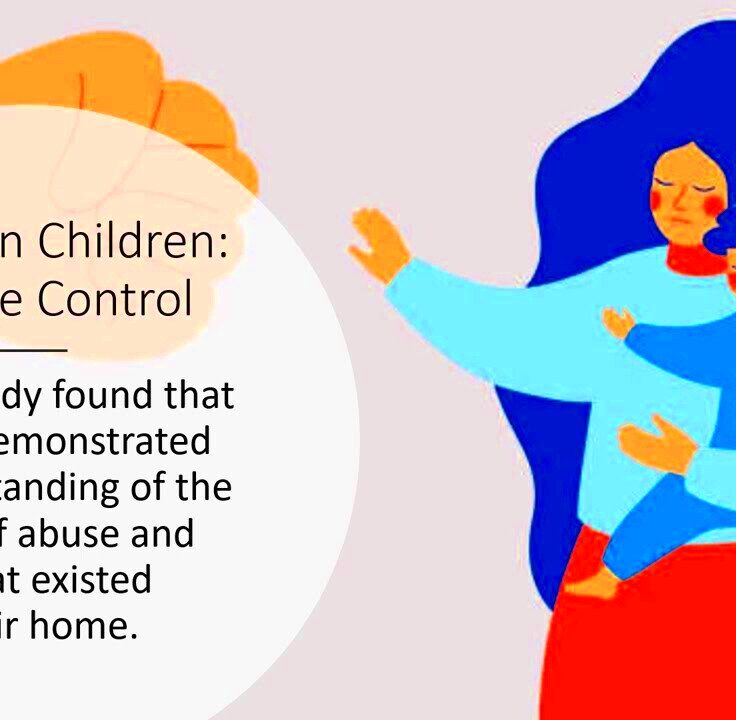Coercive Control Law in California and Its Impact on Domestic Abuse Cases
Coercive control is a complex issue that significantly affects domestic abuse cases in California. The state recognizes the importance of addressing not just physical violence but also the psychological and emotional tactics used by abusers to maintain power over their victims. This law aims to provide protection for victims and create a framework for legal action. By understanding coercive control, individuals can better recognize its signs and seek help.
Definition of Coercive Control

Coercive control refers to a pattern of behavior used by one partner to dominate and manipulate another in an intimate relationship. It can manifest in various ways, including:
- Isolation from friends and family
- Monitoring activities and communications
- Emotional abuse, such as gaslighting or belittling
- Controlling access to resources, including finances
- Threats to harm the victim or loved ones
In California, coercive control is now recognized as a form of abuse that can have severe consequences for victims. It often leaves lasting emotional scars, making it crucial to understand and address this behavior legally.
How Coercive Control Differs from Other Forms of Abuse
Coercive control stands out from other forms of abuse, such as physical violence, in several key ways:
| Aspect | Coercive Control | Physical Abuse |
|---|---|---|
| Nature of Abuse | Psychological and emotional manipulation | Physical harm or violence |
| Visibility | Often invisible and harder to recognize | Usually visible with clear signs of injury |
| Control Tactics | Isolation, monitoring, and threats | Physical attacks and violence |
| Impact | Long-term psychological effects | Physical injuries, potential for long-term disability |
Recognizing the differences between coercive control and physical abuse is vital for victims, as it helps them identify their situation more clearly and seek appropriate help. Understanding these distinctions can also aid legal professionals in addressing the complexities of domestic abuse cases in California.
Legal Framework Surrounding Coercive Control
The legal framework for coercive control in California aims to protect victims and hold abusers accountable. In 2018, California passed a law that specifically addresses coercive control in domestic violence cases. This law allows for the identification of coercive control as a form of abuse and helps victims seek protective orders. Here are some key components of this legal framework:
- Definition: Coercive control is defined within the context of domestic violence, highlighting its impact on victims.
- Protective Orders: Victims can obtain restraining orders that address coercive control tactics, providing them with legal protection.
- Law Enforcement Training: Police officers receive training to recognize coercive control behaviors and respond appropriately.
- Judicial Awareness: Courts are now more equipped to understand and evaluate cases involving coercive control.
This framework helps victims find support and navigate the legal system more effectively, ensuring that their experiences are validated and addressed appropriately.
Impact on Domestic Abuse Cases
The recognition of coercive control has significantly impacted how domestic abuse cases are handled in California. Traditionally, many cases focused solely on physical violence, which often left victims of coercive control without proper legal recourse. Now, the implications of coercive control are more widely acknowledged, resulting in various changes:
- Greater Awareness: The legal recognition of coercive control has raised awareness among victims, communities, and professionals about this subtle yet damaging form of abuse.
- Improved Victim Support: Victims can access more resources and support services tailored to their specific needs.
- More Comprehensive Legal Action: Legal proceedings can address both physical violence and psychological manipulation, leading to fairer outcomes.
These changes help ensure that victims receive the protection they need and that their experiences are taken seriously in legal settings.
Challenges in Proving Coercive Control
While the legal framework surrounding coercive control has improved, victims still face significant challenges in proving their cases. Coercive control often operates in subtle ways, making it difficult to provide concrete evidence. Here are some common challenges:
- Invisible Abuse: Unlike physical violence, coercive control may not leave visible scars or injuries, making it hard to prove in court.
- Lack of Documentation: Victims may struggle to document emotional and psychological abuse, as it often happens behind closed doors.
- Judicial Understanding: Not all judges or law enforcement officers are fully trained to recognize coercive control, which can lead to dismissive attitudes toward victims.
- Fear of Retaliation: Victims may fear retaliation from their abuser if they come forward, making them hesitant to seek help.
Overcoming these challenges requires ongoing education an
Support Services for Victims of Coercive Control
Support services play a crucial role in helping victims of coercive control regain their strength and reclaim their lives. These services provide emotional, psychological, and practical assistance to those facing this form of abuse. Here are some essential types of support services available:
- Counseling Services: Many organizations offer therapy and counseling tailored specifically for victims of domestic abuse. These professionals help victims process their experiences and rebuild their self-esteem.
- Support Groups: Joining a support group can provide a sense of community and understanding. Sharing experiences with others who have faced similar challenges can be incredibly empowering.
- Hotlines: Confidential hotlines are available for victims to reach out for immediate support. These hotlines often provide 24/7 assistance and can guide victims to local resources.
- Shelters: For those needing immediate safety, shelters offer a secure environment where victims can escape their situations and receive support services.
- Legal Advocacy: Some organizations provide legal advocacy services, helping victims navigate the legal system and obtain protective orders.
These support services are designed to empower victims and help them move forward, ensuring they know they are not alone in their struggle.
Resources for Legal Assistance
Access to legal assistance is vital for victims of coercive control, enabling them to understand their rights and take necessary actions against their abusers. Fortunately, various resources are available to help victims find the legal support they need:
- Legal Aid Organizations: Many non-profit organizations provide free or low-cost legal assistance to victims of domestic abuse. They can help with filing restraining orders, custody issues, and divorce proceedings.
- Pro Bono Services: Some attorneys offer pro bono services specifically for domestic violence victims. These attorneys are often willing to take cases for free to help those in need.
- Law School Clinics: Many law schools have clinics where law students provide legal assistance under the supervision of experienced attorneys. This can be an excellent resource for those seeking help.
- State Bar Association: The California State Bar website has a directory of resources and legal referrals specifically for domestic violence cases.
- Local Domestic Violence Organizations: Many local organizations can connect victims with legal resources and advocacy services.
Utilizing these resources can help victims of coercive control navigate the legal system effectively and secure the protection they need.
Frequently Asked Questions
As coercive control becomes more recognized in legal settings, many people have questions about its implications and available support. Here are some frequently asked questions to clarify common concerns:
- What is coercive control? Coercive control is a form of emotional and psychological abuse where one partner manipulates and dominates another through various tactics.
- How is coercive control different from physical abuse? While physical abuse involves visible harm, coercive control often operates subtly and may not leave physical signs, making it harder to recognize.
- What legal protections are available for victims? California law allows victims to seek restraining orders that address coercive control behaviors, providing legal protection.
- How can I find help? Victims can reach out to local domestic violence organizations, hotlines, or legal aid services for immediate support.
- Can I report coercive control to the police? Yes, victims can report coercive control to law enforcement, and officers are trained to recognize and respond to such behaviors.
These questions reflect common concerns about coercive control and underscore the impor
Conclusion
Understanding coercive control and its implications in domestic abuse cases is crucial for creating a safer environment for victims. The legal framework in California acknowledges this form of abuse, allowing victims to seek protection and support. However, challenges remain in proving coercive control, which highlights the need for ongoing education and awareness. By utilizing available support services and legal resources, victims can navigate their situations more effectively. It is essential for communities to recognize the signs of coercive control and support victims in their journey toward recovery and empowerment. Together, we can work towards ending this insidious form of abuse and ensure that all individuals feel safe and valued in their relationships.


